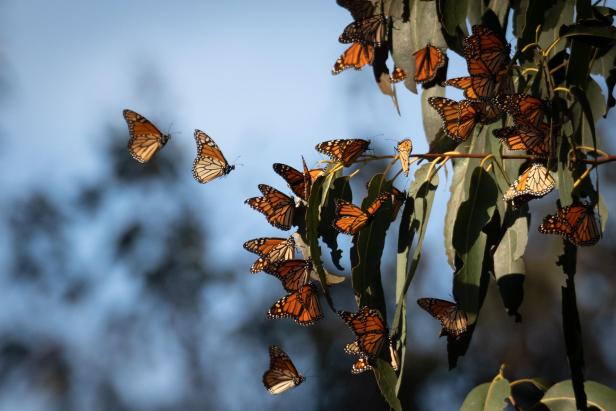 photo credit: CA State Park Foundation
photo credit: CA State Park FoundationMonarch butterflies overwinter in eucalyptus trees.
The California State Parks Foundation is asking Californians to track sightings of western monarch butterflies to help save the dwindling insect population.
The California State Parks Foundation, a nonprofit that supports the state's park system through lobbying, fundraising, volunteering, and programming, said that western monarch populations have plummeted in recent decades.Millions of monarchs used to flock to coastal California to spend the winter. In January 2025, the foundation released the 28th annual Western Monarch Count results, which found 9,119 monarchs over-wintered in the state -- the second-lowest winter population counted since the count started in 1997.
Climate change, habitat loss, pesticides and disease are the primary causes for the population decline, according to the foundation.
The foundation is asking the public to download the free iNaturalist app on their phones and start an account. To contribute, take a photo of a monarch butterfly or caterpillar and upload it to the app.
While western monarchs primarily winter along the central and southern California coast, they are found across northern California during the summer, where they breed.
An evaluation by the U.S. Fish and Wildlife Service anticipates that western monarchs have a 95% chance of being extinct by 2080.
By reporting sightings, the public can help with efforts to fund restoration projects and volunteer efforts to support monarchs. One effort is planting native plants that monarchs can source for nectar like milkweed, yarrow and coyote brush.
The foundation is also advocating for the western monarch to be listed as a federally threatened species.
"The western monarch butterfly is an iconic species for our state," said Randy Widera, director of programs for California State Parks Foundation. "Californians have a key role to play in the preservation of this species, from helping scientists track where the butterflies are located to advocating for the protection of their habitat. We're encouraging Californians to get involved by taking a few easy steps to report monarch butterfly sightings."
More information about western monarch conservation efforts and the 29th annual Western Monarch Count, which starts in October, is available at https://westernmonarchcount.org.

 Live Radio
Live Radio




